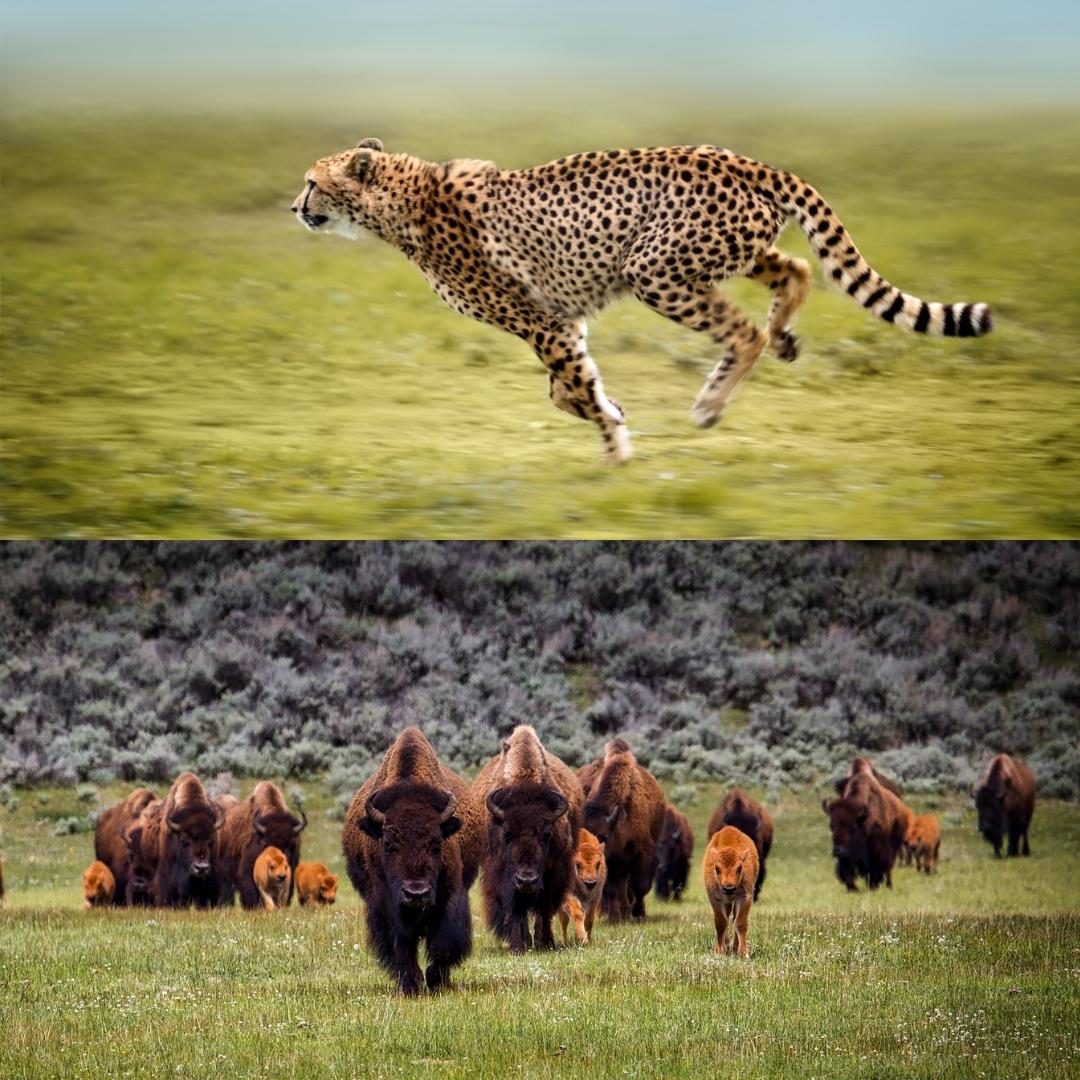Worldwide, conservation projects are helping to bring back endangered and extinct wildlife species. Here are eight species that are being reintroduced and their success stories!


Image: Canva
Cheetahs Return To India & Wild Bison Return To The UK
In India, the native population of cheetahs was announced extinct in 1952. But now, they’re reemerging! Namibia has one of the world's largest cheetah populations, and the country is sending eight of its wild cats to India to begin a five-year restoration program there. The cheetahs will reside at Kuno-Palpur National Park, which has the perfect climate and habitat for the species!
Over in the United Kingdom, wild European bison have been released into a forest in Kent, south-east England, to help maintain the woodland. Kent Wildlife Trust, who runs the project, says the natural behaviours of bison, such as grazing, eating bark, felling trees and dust bathing – can restore the biodiversity of a landscape by helping other species thrive!


Image: Canva
Vultures Are Back In Europe & Missing Lynx Returns
Vultures are vital for sustaining the balance of nature by rapidly cleaning up and recycling the bodies of deceased animals. However, they’ve mostly disappeared from Europe over the past 200 years due to lack of food, habitat loss, persecution and poisoning. Now, vulture populations are increasing in places like Bulgaria and Portugal, thanks to reintroduction programs.
A type of wild cat, the Eurasian Lynx, was thought to be extinct across almost all of Central Europe for 200 years, due to hunting and habitat loss. Thankfully, the lynx has now been successfully reintroduced to Switzerland, Slovenia, Croatia, France, Italy, the Czech Republic, Germany and Austria! There are now about 9,000 to 10,000 Eurasian lynx in Europe!


Image: Canva
‘Rat Kangaroos’ Return To Australia & Ferrets Breed In The US
Have you ever heard of the Australian brush-tailed bettong, or woylie? This endangered animal also has the name ‘rat kangaroo’! It’s now been re-introduced into Australia after disappearing more than 100 years ago. This animal is crucial for the ecosystem, as they disperse seeds and nutrients while digging up soil, improving habitats for other species.
Once considered the rarest mammal in the world, the black-footed ferret, a type of weasel, was recognised as threatened in 1967. By 1987, only 18 black-footed ferrets were thought to exist! They were put into a captive breeding program and re-introduced into US national parks in 1994 and 2007. Today, about 1,000 black-footed ferrets live in the wild!


Image: Canva
Red Kites Return To The UK & China’s Wild Horses Back From The Brink
Red kites are a large bird of prey, that were driven to the brink of extinction in England in the 19th century. But the good news is, the reintroduction of red kites to the UK has been one of the most successful conservation stories of the 20th century! There are now thought to be at least 1,000 breeding pairs in Chilterns, where a four-year reintroduction project took place.
There’s a wild horse species called Przewalski's horse, said to be the world’s only true wild horse. In China the horse became extinct due to excessive poaching and environmental degradation. But in 1985, China began reintroducing the species from the UK, US and Germany, breeding more than 800 wild horses across six generations!
We are so glad to hear that these eight endangered animals are being reintroduced into the environment! They each play a super important role in the ecosystem, not only is this important for the species themselves - preserving wildlife biodiversity has positive impacts on food supplies, jobs, and economies too.
If you love hearing about wildlife conservation and amazing rewilding projects, head to our Eco News category and check out the blogs below.
Meet The Broad-Toothed Rat: A Chubby-Cheeked Australian Rodent
Scientists Had Never Spotted This Elusive Whale Alive — Until Now!
Elusive, Singing Hummingbird That Was Feared Extinct Is Rediscovered In The Columbian Mountains

